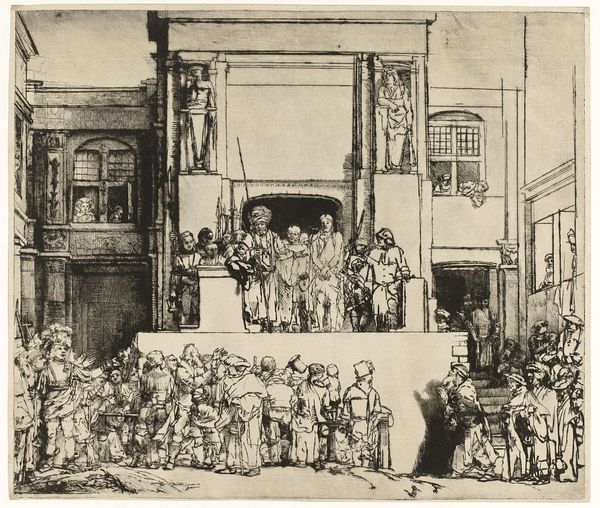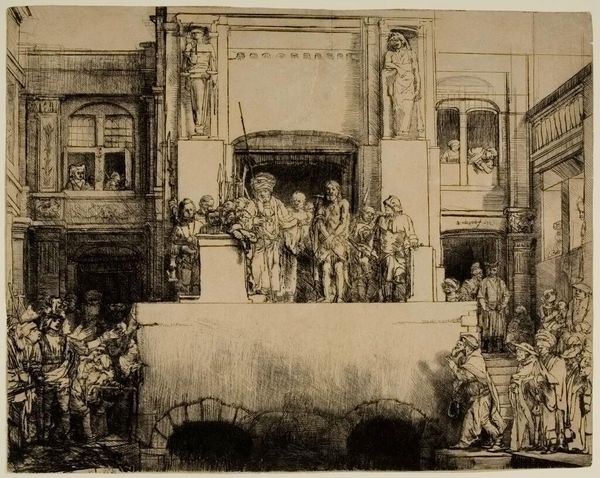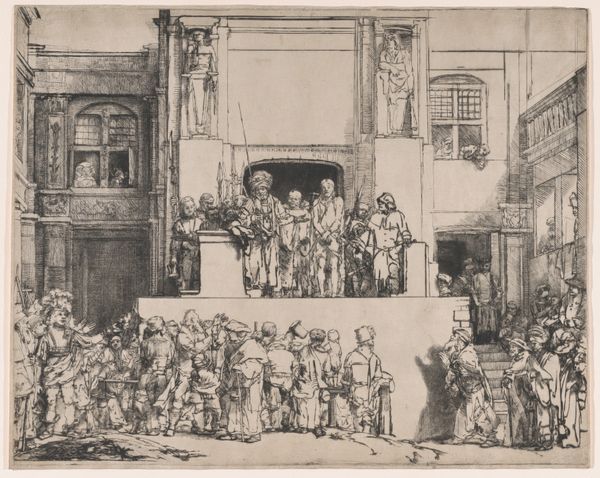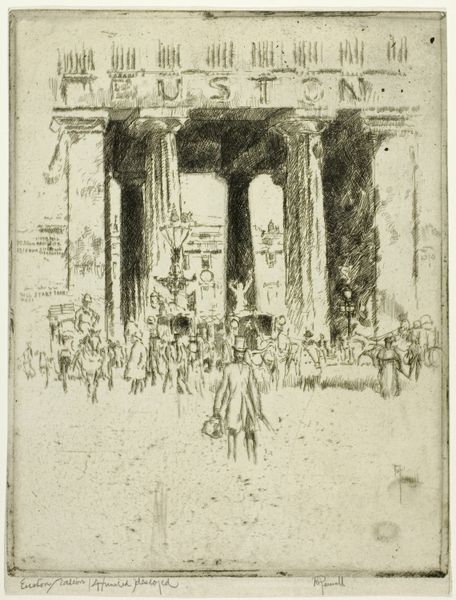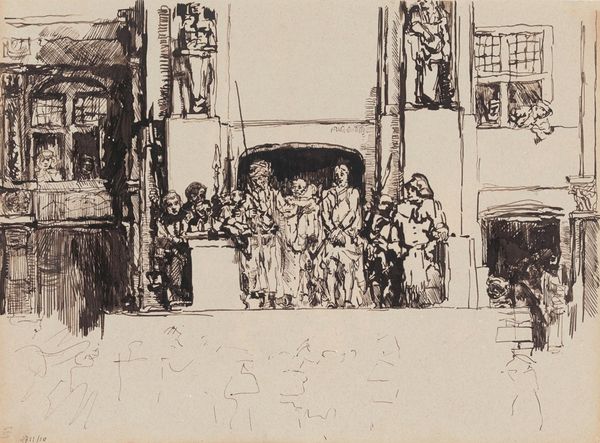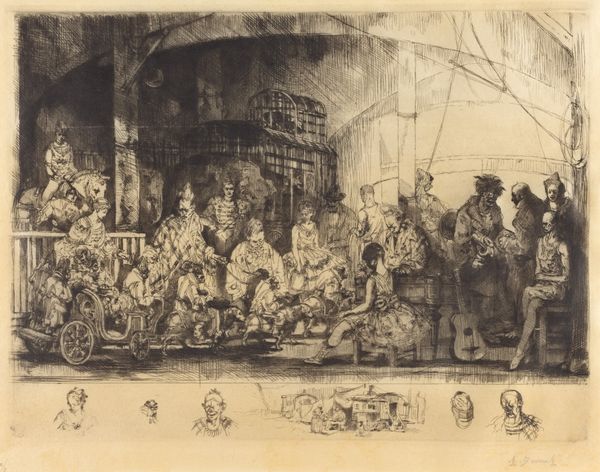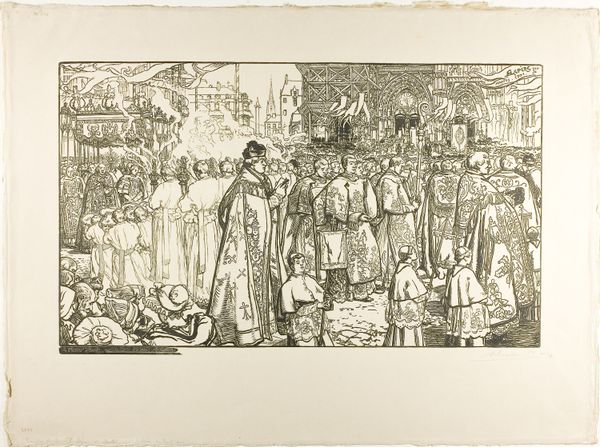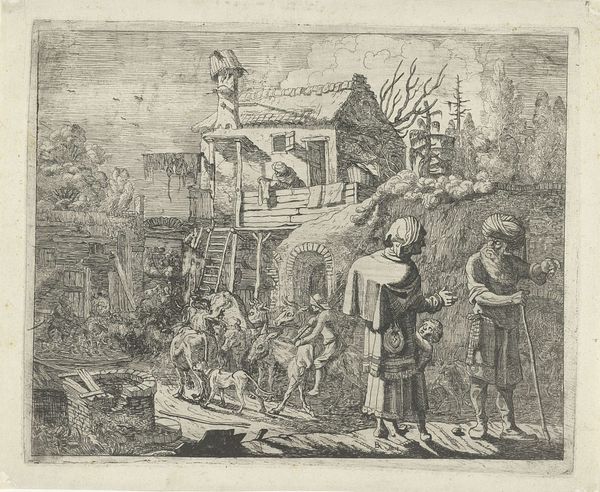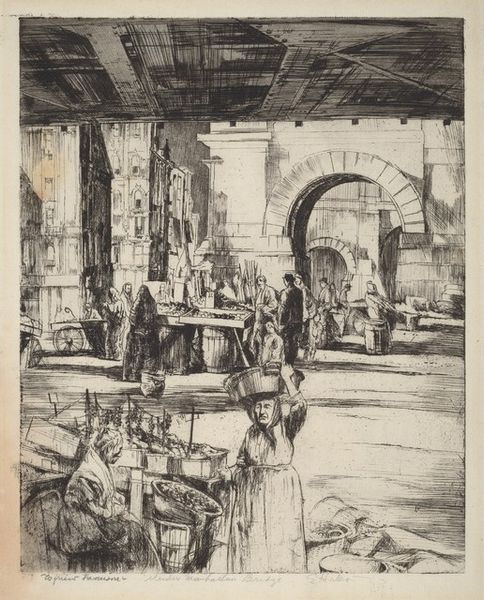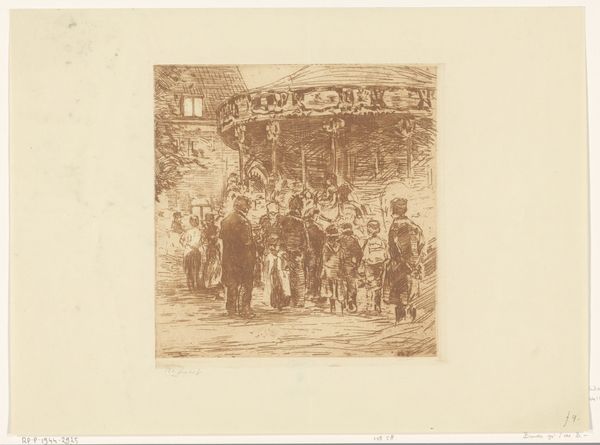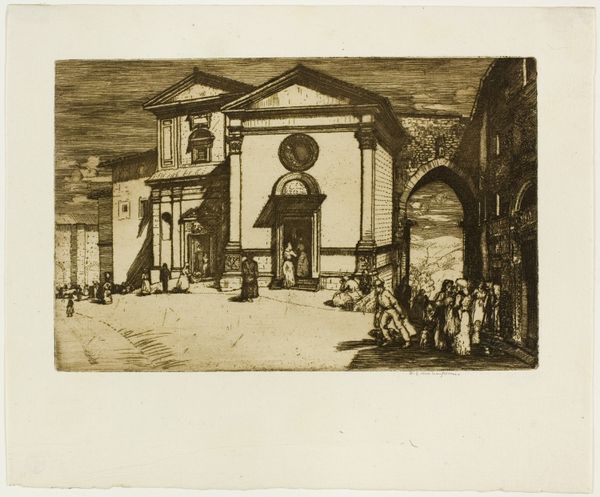
drawing, print, etching, ink
#
drawing
#
ink drawing
#
baroque
# print
#
etching
#
ink
#
history-painting
Dimensions: Sheet: 14 x 17 15/16 in. (35.6 x 45.5 cm)
Copyright: Public Domain
Editor: Here we have Rembrandt van Rijn’s etching, “Christ Presented to the People,” created around 1655. The scene feels incredibly tense, almost claustrophobic, despite the grand architectural setting. What jumps out at you? Curator: For me, it’s how Rembrandt uses that architectural space, not just as a backdrop, but as a commentary on power structures. Look at how Christ is positioned on the platform, ostensibly for viewing, yet it also isolates and objectifies him. It reminds us that the act of display is never neutral; it always carries political weight. Editor: I see what you mean. The crowd’s kind of chaotic, too. Are they complicit in this spectacle? Curator: Exactly! Are they merely observers, or active participants in this injustice? Consider how Rembrandt’s own historical context—the Dutch Republic, with its own struggles for religious and political freedom—might have influenced his depiction. What do you notice about how certain figures are illuminated versus those left in shadow? Editor: It’s striking. The figures demanding Christ's crucifixion seem shrouded, less individual, almost like a faceless mob. But Christ, even in his vulnerability, is bathed in light. Curator: Precisely. Light and shadow become metaphors for moral clarity versus the obscuring forces of prejudice and societal pressure. This is more than just a biblical scene, it's an indictment of systems that allow injustice to thrive. Editor: So, it’s less about religious dogma, and more about power dynamics and social responsibility. Curator: Absolutely. Rembrandt forces us to confront the uncomfortable reality that complicity often wears the mask of apathy. And it's a powerful indictment that resonates even today. Editor: I hadn’t thought about it that way. Now, seeing it in the context of political commentary changes my whole perception. Thanks!
Comments
No comments
Be the first to comment and join the conversation on the ultimate creative platform.
